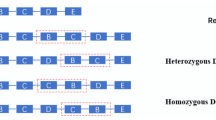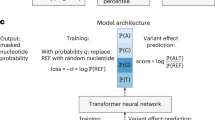Abstract
Distinguishing single-nucleotide variants (SNVs) from errors in whole-genome sequences remains challenging. Here we describe a set of filters, together with a freely accessible software tool, that selectively reduce error rates and thereby facilitate variant detection in data from two short-read sequencing technologies, Complete Genomics and Illumina. By sequencing the nearly identical genomes from monozygotic twins and considering shared SNVs as 'true variants' and discordant SNVs as 'errors', we optimized thresholds for 12 individual filters and assessed which of the 1,048 filter combinations were effective in terms of sensitivity and specificity. Cumulative application of all effective filters reduced the error rate by 290-fold, facilitating the identification of genetic differences between monozygotic twins. We also applied an adapted, less stringent set of filters to reliably identify somatic mutations in a highly rearranged tumor and to identify variants in the NA19240 HapMap genome relative to a reference set of SNVs.
This is a preview of subscription content, access via your institution
Access options
Subscribe to this journal
Receive 12 print issues and online access
$259.00 per year
only $21.58 per issue
Buy this article
- Purchase on SpringerLink
- Instant access to full article PDF
Prices may be subject to local taxes which are calculated during checkout



Similar content being viewed by others
Accession codes
References
Ashley, E.A. et al. Clinical assessment incorporating a personal genome. Lancet 375, 1525–1535 (2010).
Cirulli, E.T. & Goldstein, D.B. Uncovering the roles of rare variants in common disease through whole-genome sequencing. Nat. Rev. Genet. 11, 415–425 (2010).
DePristo, M.A. et al. A framework for variation discovery and genotyping using next-generation DNA sequencing data. Nat. Genet. 43, 491–498 (2011).
Anonymous. The sequence is dead: long live the genome. Nat. Biotechnol. 29, 463 (2011).
Lee, W. et al. The mutation spectrum revealed by paired genome sequences from a lung cancer patient. Nature 465, 473–477 (2010).
Pleasance, E.D. et al. A small-cell lung cancer genome with complex signatures of tobacco exposure. Nature 463, 184–190 (2010).
Pleasance, E.D. et al. A comprehensive catalogue of somatic mutations from a human cancer genome. Nature 463, 191–196 (2010).
Dalgliesh, G.L. et al. Systematic sequencing of renal carcinoma reveals inactivation of histone modifying genes. Nature 463, 360–363 (2010).
Roach, J.C. et al. Analysis of genetic inheritance in a family quartet by whole-genome sequencing. Science 328, 636–639 (2010).
Ahn, S.M. et al. The first Korean genome sequence and analysis: full genome sequencing for a socio-ethnic group. Genome Res. 19, 1622–1629 (2009).
Baranzini, S.E. et al. Genome, epigenome and RNA sequences of monozygotic twins discordant for multiple sclerosis. Nature 464, 1351–1356 (2010).
Bentley, D.R. et al. Accurate whole human genome sequencing using reversible terminator chemistry. Nature 456, 53–59 (2008).
Drmanac, R. et al. Human genome sequencing using unchained base reads on self-assembling DNA nanoarrays. Science 327, 78–81 (2010).
The 1000 Genomes Project Consortium. A map of human genome variation from population-scale sequencing. Nature 467, 1061–1073 (2010).
Fujimoto, A. et al. Whole-genome sequencing and comprehensive variant analysis of a Japanese individual using massively parallel sequencing. Nat. Genet. 42, 931–936 (2010).
Kim, J.I. et al. A highly annotated whole-genome sequence of a Korean individual. Nature 460, 1011–1015 (2009).
Kitzman, J.O. et al. Haplotype-resolved genome sequencing of a Gujarati Indian individual. Nat. Biotechnol. 29, 59–63 (2011).
Ley, T.J. et al. DNA sequencing of a cytogenetically normal acute myeloid leukaemia genome. Nature 456, 66–72 (2008).
Lupski, J.R. et al. Whole-genome sequencing in a patient with Charcot-Marie-Tooth neuropathy. N. Engl. J. Med. 362, 1181–1191 (2010).
McKernan, K.J. et al. Sequence and structural variation in a human genome uncovered by short-read, massively parallel ligation sequencing using two-base encoding. Genome Res. 19, 1527–1541 (2009).
Pelak, K. et al. The characterization of twenty sequenced human genomes. PLoS Genet. 6, e1001111 (2010).
Rasmussen, M. et al. Ancient human genome sequence of an extinct Palaeo-Eskimo. Nature 463, 757–762 (2010).
Schuster, S.C. et al. Complete Khoisan and Bantu genomes from southern Africa. Nature 463, 943–947 (2010).
Tong, P. et al. Sequencing and analysis of an Irish human genome. Genome Biol. 11, R91 (2010).
Wheeler, D.A. et al. The complete genome of an individual by massively parallel DNA sequencing. Nature 452, 872–876 (2008).
Rhead, B. et al. The UCSC Genome Browser database: update 2010. Nucleic Acids Res. 38, D613–D619 (2010).
Siva, N. 1000 Genomes project. Nat. Biotechnol. 26, 256 (2008).
Lynch, M. et al. A genome-wide view of the spectrum of spontaneous mutations in yeast. Proc. Natl. Acad. Sci. USA 105, 9272–9277 (2008).
Haag-Liautard, C. et al. Direct estimation of per nucleotide and genomic deleterious mutation rates in Drosophila. Nature 445, 82–85 (2007).
Baranzini, S.E. et al. Genome, epigenome and RNA sequences of monozygotic twins discordant for multiple sclerosis. Nature 464, 1351–1356 (2010).
Cooper, G.M. et al. Distribution and intensity of constraint in mammalian genomic sequence. Genome Res. 15, 901–913 (2005).
Penzkofer, T., Dandekar, T. & Zemojtel, T. L1Base: from functional annotation to prediction of active LINE-1 elements. Nucleic Acids Res. 33, D498–D500 (2005).
Leunen, K. et al. Recurrent copy number alterations in BRCA1-mutated ovarian tumors alter biological pathways. Hum. Mutat. 30, 1693–1702 (2009).
Gorringe, K.L. & Campbell, I.G. Large-scale genomic analysis of ovarian carcinomas. Mol. Oncol. 3, 157–164 (2009).
Futreal, P.A. et al. A census of human cancer genes. Nat. Rev. Cancer 4, 177–183 (2004).
The Cancer Genome Atlas Research Network. Integrated genomic analyses of ovarian carcinoma. Nature 474, 609–615 (2011).
Muotri, A.R. et al. L1 retrotransposition in neurons is modulated by MeCP2. Nature 468, 443–446 (2010).
Karlsson, H. et al. Retroviral RNA identified in the cerebrospinal fluids and brains of individuals with schizophrenia. Proc. Natl. Acad. Sci. USA 98, 4634–4639 (2001).
Altshuler, D.M. et al. Integrating common and rare genetic variation in diverse human populations. Nature 467, 52–58 (2010).
Li, H. & Durbin, R. Fast and accurate long-read alignment with Burrows-Wheeler transform. Bioinformatics 26, 589–595 (2010).
McKenna, A. et al. The Genome Analysis Toolkit: a MapReduce framework for analyzing next-generation DNA sequencing data. Genome Res. 20, 1297–1303 (2010).
Weckx, S. et al. novoSNP, a novel computational tool for sequence variation discovery. Genome Res. 15, 436–442 (2005).
Van Loo, P. et al. Allele-specific copy number analysis of tumors. Proc Natl Acad Sci USA 39, 16910–16915 (2010).
Wingender, E. et al. TRANSFAC: an integrated system for gene expression regulation. Nucleic Acids Res. 28, 316–319 (2000).
Griffith, O.L. et al. ORegAnno: an open-access community-driven resource for regulatory annotation. Nucleic Acids Res. 36, D107–D113 (2008).
Visel, A. et al. VISTA Enhancer Browser–a database of tissue-specific human enhancers. Nucleic Acids Res. 35, D88–D92 (2007).
Felsenstein, J. & Churchill, G.A. A Hidden Markov Model approach to variation among sites in rate of evolution. Mol. Biol. Evol. 13, 93–104 (1996).
Ng, P.C. & Henikoff, S. SIFT: predicting amino acid changes that affect protein function. Nucleic Acid Res. 31, 3812–3814 (2003).
Adzhubei, I.A. et al. A method and server for predicting damaging missense mutations. Nat. Methods 7, 248–249 (2010).
Kaminker, J.S. et al. CanPredict: a computational tool for predicting cancer-associated missense mutations. Nucleic Acids Res. 35, W595–W598 (2007).
Acknowledgements
We appreciate the assistance of M. Veugelers and S. Plaisance (VIB Technology Watch). We acknowledge G. Peuteman, T. Van Brussel, S. Cammaerts, M. Strazisar and the Genetic Service Facility (http://www.vibgeneticservicefacility.be/) for technical assistance. We highly appreciate the helpful comments from the reviewers. The research was supported by the Fund for Scientific Research Flanders (FWO-F) to J.R. and P.V.L., the Agency for Innovation by Science and Technology (IWT) to M.V.D.B., the Stichting tegen Kanker, FWO-F and the KULeuven (KULPFV/10/016-SymBioSysII)) to D.L.
Author information
Authors and Affiliations
Contributions
D.L. and J.D.-F. conceptualized this work. J.R. and P.D.R. wrote algorithms and analyzed data. H.Z. analyzed the Yoruban genome, A.L. assisted with the twin analysis. J.C. and B.H. performed RTG-related analyses. P.V.L. provided the ASCAT algorithm, D.S. performed SNP array experiments. K.C., M.V.D.B., B.S., E.D. and I.V. selected and characterized patient samples. All authors approved the manuscript.
Corresponding authors
Ethics declarations
Competing interests
B.H. and J.C. are employees of Real Time Genomics and have financial interests in Real Time Genomics.
Supplementary information
Supplementary Text and Figures
Supplementary Notes 1–14 (PDF 5224 kb)
Supplementary Table S1
Validation experiments for the twin and tumor-normal genomes using Sanger sequencing and Sequenom MassARRAY genotyping (XLSX 390 kb)
Supplementary Table S2
Metrics and error rates calculated for each filter combination performed on the twin genome comparison using coverage depth cutoffs of 10 and 20 (XLSX 908 kb)
Supplementary Table S3
Overlap analysis of somatic variants in Tumor 1 and its replicate using three filter settings (XLSX 106 kb)
Supplementary Table S4
Sequenom validation of somatic missense SNVs in the ovarian clear cell tumor genome using three filter settings (XLSX 67 kb)
Supplementary Table S5
Prediction of the effect of the validated somatic mutations and somatic non-coding SNVs in the ovarian serous carcinoma (XLSX 18 kb)
Supplementary Table S6
Effect of filters cumulatively applied to the NA19240 genome, using stringent CG filters versus unfiltered CG data (XLSX 500 kb)
Rights and permissions
About this article
Cite this article
Reumers, J., De Rijk, P., Zhao, H. et al. Optimized filtering reduces the error rate in detecting genomic variants by short-read sequencing. Nat Biotechnol 30, 61–68 (2012). https://doi.org/10.1038/nbt.2053
Received:
Accepted:
Published:
Issue date:
DOI: https://doi.org/10.1038/nbt.2053
This article is cited by
-
Increased prime edit rates in KCNQ2 and SCN1A via single nicking all-in-one plasmids
BMC Biology (2023)
-
Genetic mapping, transcriptomic sequencing and metabolic profiling indicated a glutathione S-transferase is responsible for the red-spot-petals in Gossypium arboreum
Theoretical and Applied Genetics (2022)
-
OsWRKY115 on qCT7 links to cold tolerance in rice
Theoretical and Applied Genetics (2022)
-
Chromosomal fragment deletion in APRR2-repeated locus modulates the dark stem color in Cucurbita pepo
Theoretical and Applied Genetics (2022)
-
Physical mapping and InDel marker development for the restorer gene Rf2 in cytoplasmic male sterile CMS-D8 cotton
BMC Genomics (2021)



